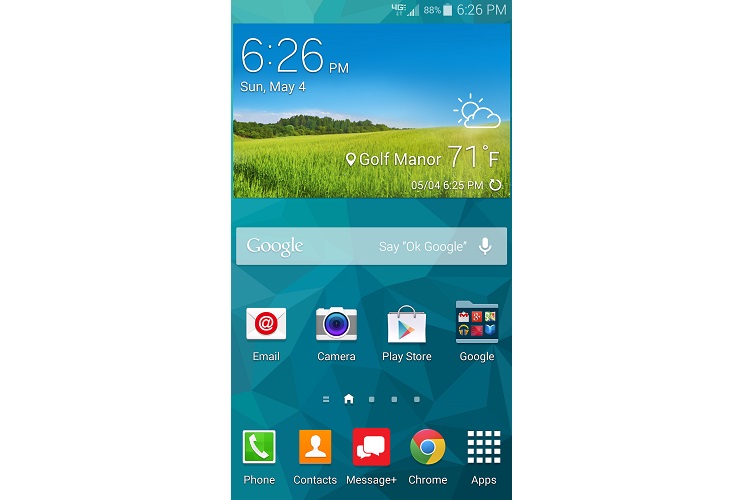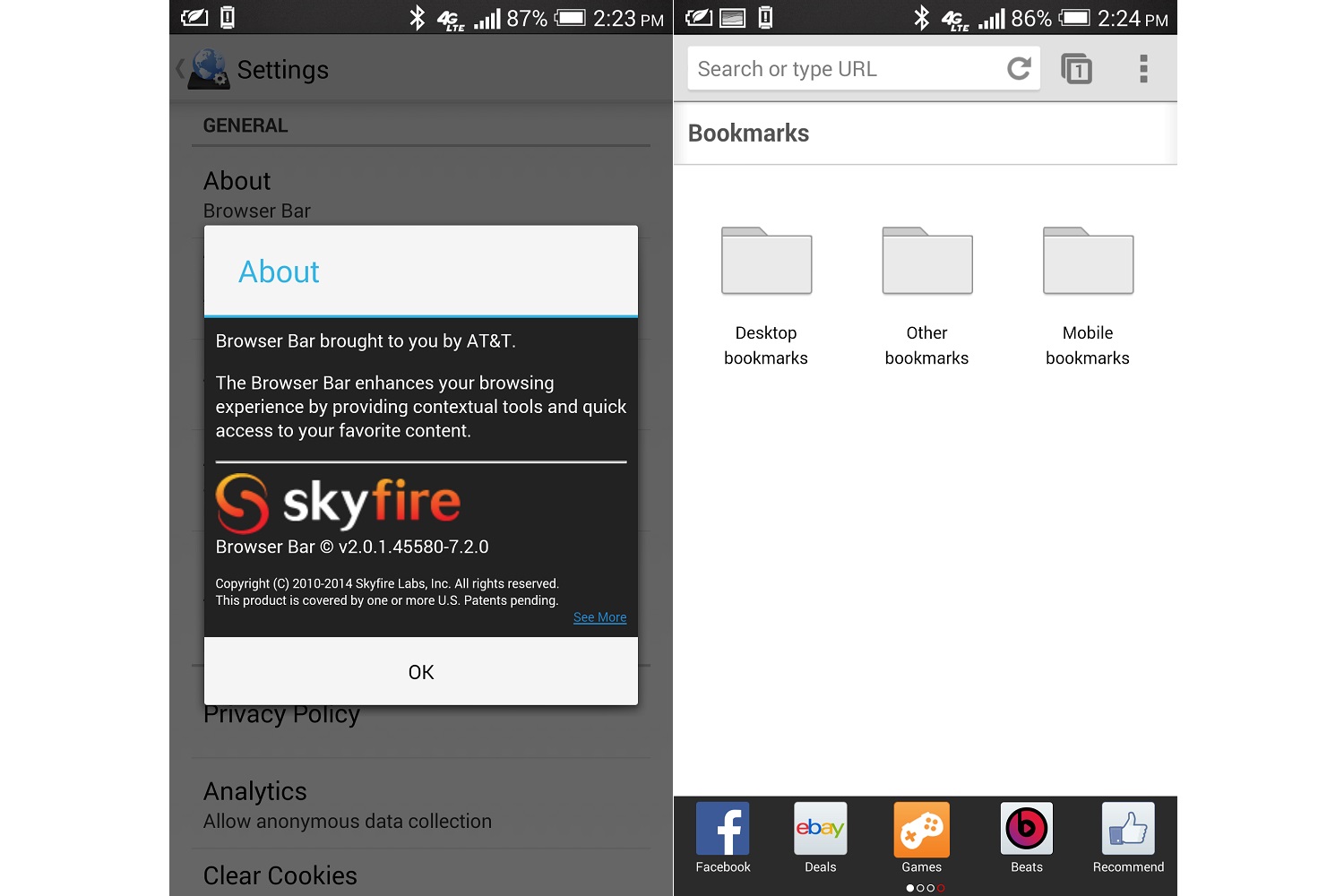I’ve used a lot of Android phones over the years, and while the platform has become smoother, faster and more pleasant with age, one thing hasn’t changed: You still have to deal with bloatware.
You may know it by some other name. Crapware. Junkware. The euphemistic “pre-loaded apps” or the less technical “all this stuff on my screen.” Regardless of the term, I define it loosely as “apps of dubious value that you didn’t install and are difficult or impossible to remove.” Most Android phones, especially as sold by major wireless carriers, are lousy with these apps.
This is not a new trend; phone makers have been pre-loading their devices with junk for years, either on their own or at the behest of wireless carriers. But now it seems to be getting worse.
I was reminded of this last week while setting up my wife’s Samsung Galaxy S5 from Verizon. This fine phone is bogged down with all kinds of junk, but one thing in particular stood out to me when I got to the home screen:

At first glance, it looks harmless–logical, even. But what’s that “Message+” app in the center of the dock?
Upon closer inspection, this is not Samsung’s typical text messaging app. It’s an entirely separate messaging app from Verizon:

Verizon has set this up to be the main text messaging experience on the Galaxy S5, but it’s actually one of three apps for this purpose. Samsung has its own messaging app, and Google has Hangouts, which can display both standard texts and Google chat messages.
Verizon’s app is ugly, but it’s not awful. It even has one noteworthy feature: the ability to aggregate all links in a separate view. But that’s beside the point.
The real problem here is that where users once had two pre-loaded texting apps to choose from–already one too many–they now have three. And they’re all taking up space and consuming system resources. We’d better hope Samsung doesn’t get into the cloud storage and turn-by-turn navigation businesses, because Verizon and Google already have apps for that.
I’ve had struggles with increasingly intrusive bloatware on my own HTC One. In March, AT&T delivered an update to Android 4.4 KitKat, and with it, included a sneaky new version of the carrier’s “Browser Bar.” Instead of just being limited to HTC’s own web browser (which, again, doesn’t need to exist in the first place), it gained the ability to pop up in Chrome, and pestered me via push notifications to do so.

Similar to the Windows crapware, these pre-loaded apps and “services” are easy ways for phone makers and carriers to boost their profits. All they have to do in return is flick the user experience in the ear.
Users aren’t completely powerless to fight back, at least. If you’re bothered by bloatware, you can go to Settings > Applications (or Apps on some phones), then swipe over to the “All” section. Tap on any app you don’t want, and press “Disable.” Ignore the message that says it may misbehave if it’s a built-in app. As long as it’s an actual app, represented by an icon in your app tray or on your home screen, you shouldn’t have any problems. But even this isn’t a perfect solution, because these apps are still hogging space on your device, and removing them is still a chore.
Android users may be able to get actual relief in the future through a rumored “Android Silver” program. If reports are correct, Google may work with phone makers and wireless carriers to curb the bloatware on their high-end Android phones in exchange for direct payment and marketing support. It’d be kind of like the Nexus and Google Play Edition programs, but with phones you could actually buy through your wireless carrier.
Until that happens, though, the only way to guarantee a bloat-free experience is to buy a bloat-free phone, such as Google’s Nexus 5, Motorola’s Moto X or any Google Play Edition handset. You may have to pay full price if you’re not buying straight from your wireless carrier, but AT&T and T-Mobile will at least give you a cheaper monthly bill in exchange. After seeing the carrier bloatware situation get worse over the years, I’m becoming more and more tempted to go this route.
More Must-Reads From TIME
- The 100 Most Influential People of 2024
- The Revolution of Yulia Navalnaya
- 6 Compliments That Land Every Time
- Stop Looking for Your Forever Home
- If You're Dating Right Now , You're Brave: Column
- The AI That Could Heal a Divided Internet
- Fallout Is a Brilliant Model for the Future of Video Game Adaptations
- Want Weekly Recs on What to Watch, Read, and More? Sign Up for Worth Your Time
Contact us at letters@time.com